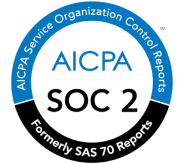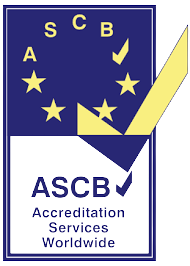Table of Content
In the rat race of competition, it becomes hectic for HRs and managers to attract and hire the best and right talent for the organisation. Many organisations are investing heavily in talent acquisition metrics, seeing the need for talent acquisition.
It consists of many metrics that must be maintained to achieve great results through the recruitment drives. Much of the resources get invested in the recruiting process, so to be sure they are paying off, it is critical to measure and track key metrics known as KPIs widely.
For this, you will need the latest and most collaborative HRMS that gives clear insight and analytics to take major decisions.
Through smart uKnowva HRMS, HRs can monitor time-to-fill positions, assess the quality of hires, identify areas for improvement, and evaluate the effectiveness of sourcing channels. Let’s look at TA metrics in detail.
Want to skip the content?
Schedule a demo.
8 Talent Acquisition Metrics You Need to Measure in 2023
You must track key metrics at every stage of the recruitment process to measure the success of your talent acquisition metrics. Below are 8 essential metrics that an organisation must consider to have great results.
-
Candidate conversion rate
This metric offers a clear insight by comparing the total available number of candidates who start an application versus those who have completed and submitted the application form. A lower conversion rate indicates your onboarding and recruitment process is too cumbersome.
You can improve this conversion rate by simplifying the recruitment and pre-boarding process. uKnowva HRMS helps you do that with its digitally transforming applicant tracking system.
-
Offer acceptance rate
It measures the number of candidates who accepted the offer and the total number of candidates selected and offered the job. A lower acceptance rate can indicate problems related to job roles, salaries, compensation, requirements, etc. It gives insights and measures the recruitment process effectively. When the offer acceptance rate is higher, the value of the process also increases by itself.
-
Time to fill
The total time gets consumed from posting a job opening till the vacancy is filled is measured by time-to-fill metrics. It is a balancing act. Many steps must be taken if you want your hiring process to be thorough and don’t want your candidates to lose interest or be snapped away. We will provide a guide that helps you throughout the process and ideally helps improve upon the time. With time to fill, remember to give more importance to the hire quality.
-
Internal mobility
It is also one of the major metrics in today’s scenario. Allowing employees to grow is a win-win situation for both employees and employers. When employees get proper training and classes to develop and learn new skills or sharpen them, they willingly stay for the long term. It has become necessary to create a mobility program to increase overall productivity.
-
Applicants per opening
It indicates the high demand for a job in a particular area. It doesn’t necessarily indicate the number of qualified candidates. You can easily reduce the number of applicants by narrowing the description, putting filters, and including hard criteria to pass. It does not reduce the number of suitable candidates for the job. You can take the help of those sourcing channels that previously brought qualified candidates.
For accurate job descriptions, HRs can use AI Suggest by uKnowva, which generates complete job descriptions for any given designation within seconds. This will further improve candidate experience when they apply for a job with clear details pasted by the recruiter.
-
Productivity rate
This metric indicates the level of productivity in the new hires. The higher the level of productivity, the better the quality of hire. This metric has to be run in the organisation occasionally to check and maintain success and productivity. When your organisation is facing some challenges or a downfall, then it is likely that the productivity rate is low.
With uKnowva HRMS, reporting managers can easily set up productivity or performance measures. That happens within seconds.
-
Retention rate
This metric can reveal a lot about the effectiveness of your recruitment process. It calculates the time for which an employee stays within the organisation. A high retention rate shows employees feel motivated, valued, and engaged in their work, and HRs have hired the right people. On the other hand, a low retention rate may indicate problems in onboarding, hiring process, management, or company work culture that needs to be upgraded.
The AI Suggest feature at uKnowva helps to report managers to generate probation module questions within seconds. These questions help in confirming whether to make a new employee permanent. It can also help to report managers retain the best of their employees or extend their probation to improve their performance.
-
Sourcing channel effectiveness
It is the metric that will affect all the above-stated metrics as it measures the effectiveness of the platforms used to advertise job openings. If the effectiveness of the sourcing channel is high, you will get good candidates that help in empowering your productivity and work culture. You should assess the quality of each channel and then decide which ones are worthwhile in terms of money and time.
Conclusion
Serious commitment and efforts are needed for calculating, tracking, and reporting on metrics as it is essential for talent acquisition metrics or their success. If you are facing issues getting the correct results, you must re-evaluate your ATS technology. A robust solution like uKnowva can help ensure that you achieve all the heights and your talent acquisition goals.
Contact us for a demo.
FAQs
What is talent acquisition?
Talent acquisition (TA) helps correctly identify, appeal, and acquire qualified candidates to fill specific roles within an organisation. It involves sourcing candidates, conducting interviews, evaluating qualifications, and making successful hires to build a strong workforce.
Why are talent acquisition metrics needed for organisations?
Talent acquisition metrics are essential for organisations as they provide valuable insights into the effectiveness and efficiency of their hiring processes. These metrics enable companies to measure and track key recruitment indicators, such as time-to-fill, cost-per-hire, quality of hire, and applicant satisfaction, helping them make data-driven decisions to optimise their talent acquisition strategies and improve overall recruitment outcomes.
More Blogs to Explore













